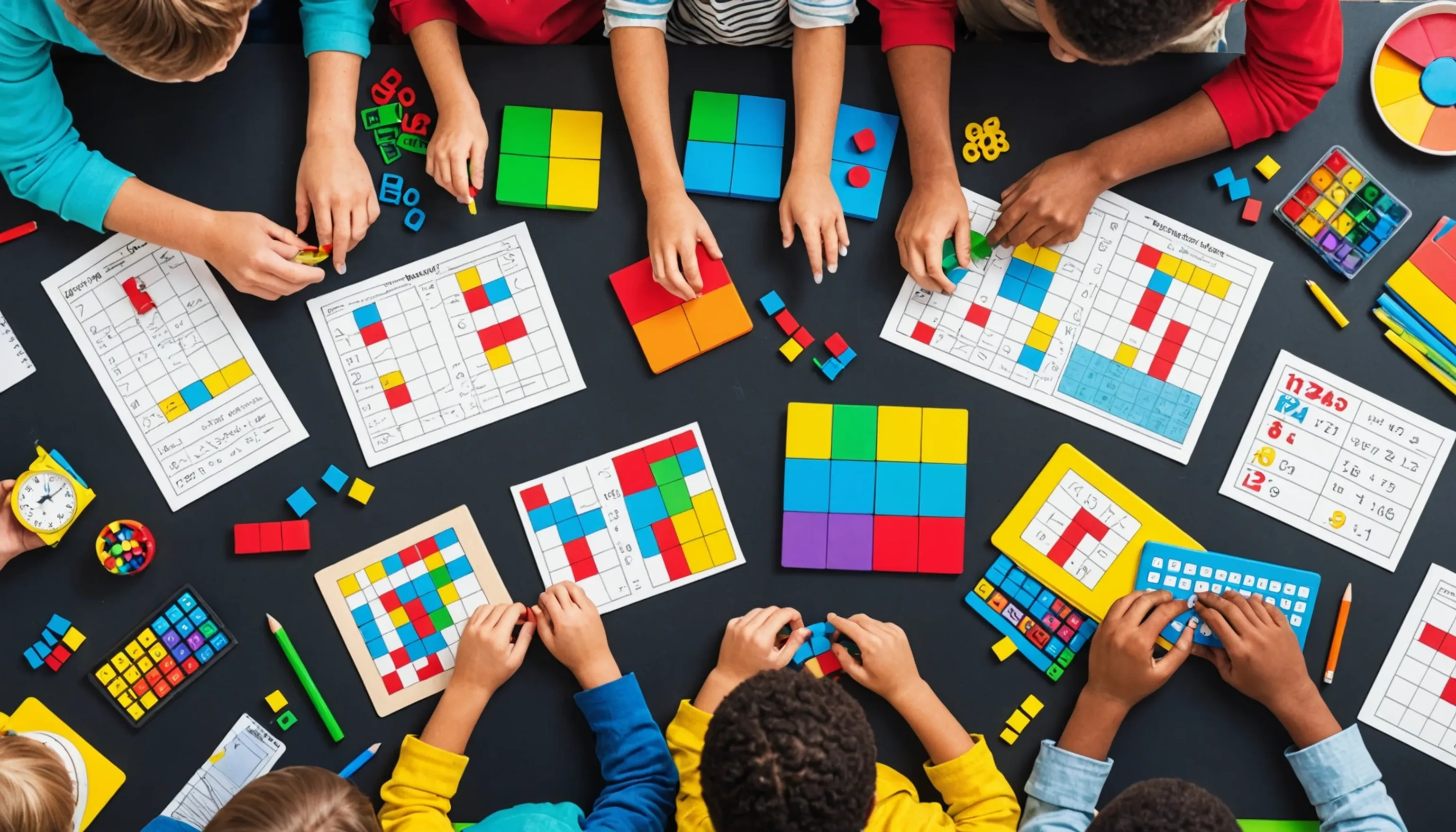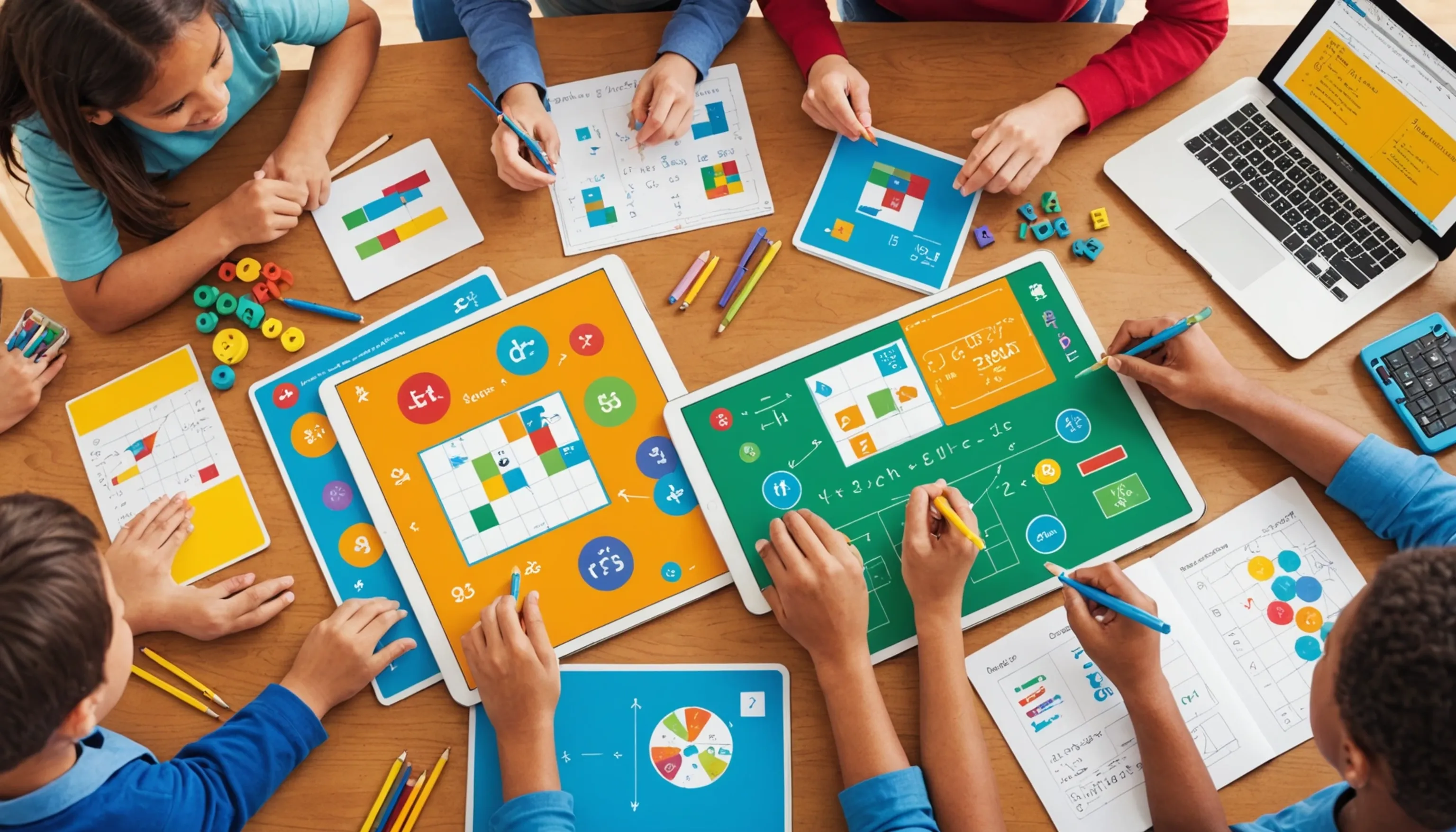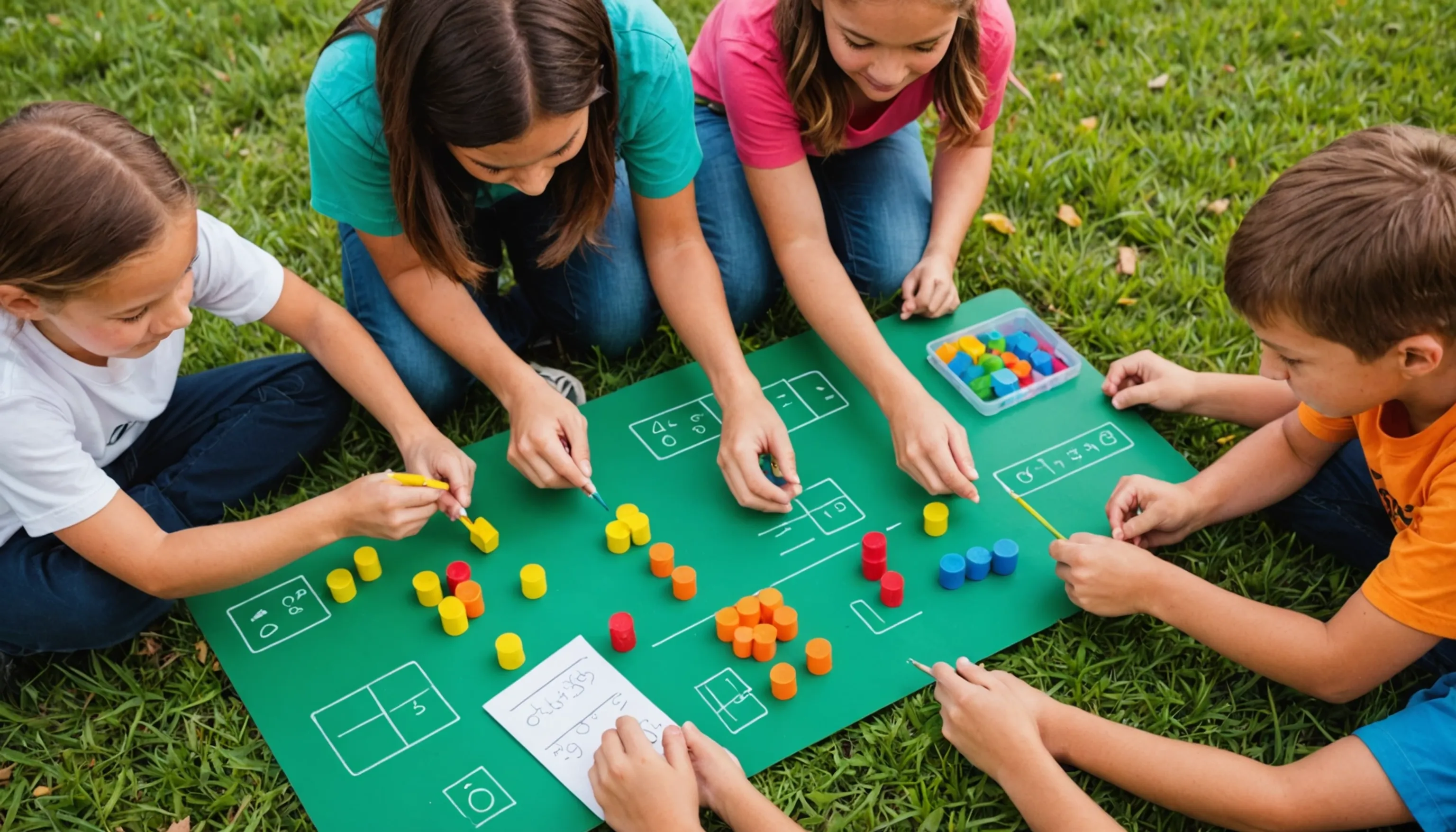Making Math Fun for All Ages
 HvWHenry van Wagenberg
HvWHenry van Wagenberg
Making Math Fun for All Ages
Making math fun for all ages is essential to fostering a love for learning. By incorporating engaging activities, parents & teachers can transform math from a dreaded subject into an exciting adventure. This can be achieved through interactive games, hands-on projects, and real-world applications that resonate with students. When math is presented in a fun & relatable way, it not only enhances understanding but also boosts confidence. By creating an environment where mistakes are seen as learning opportunities, students can explore mathematical concepts with curiosity and enthusiasm, paving the way for lifelong learning.
Why Math Can Be Enjoyable
Math often gets a bad reputation as a boring or difficult subject, but it can actually be quite enjoyable when approached from the right angle. One key reason why math can be enjoyable is its inherent challenge; solving complex problems provides a sense of accomplishment. This sense of achievement can be incredibly rewarding, especially when students see their skills improve over time.
Another aspect that makes math enjoyable is its versatility. Math is not just about numbers and formulas; it can be applied to various interests. For instance, art & music both rely heavily on mathematical concepts, such as symmetry and rhythm. By highlighting these connections, teachers & parents can show students how math is relevant in their everyday lives.
Moreover, math encourages critical thinking & creativity. When students tackle math problems, they engage in a process that involves analyzing information, making connections, & developing solutions. This fosters a growth mindset, where students learn to enjoy the process of problem-solving rather than just focusing on the final answer.
Incorporating collaborative activities can also enhance the enjoyment of math. Working in groups allows students to share ideas, learn from one another, & approach problems from different perspectives. This social element can make math feel less isolating and more like a shared adventure.
Ultimately, by changing the narrative around math and embracing its enjoyable aspects, we can create an engaging learning environment that inspires students to appreciate this essential subject.
The Importance of Engaging Math Activities
Engaging math activities are crucial for fostering a positive attitude toward mathematics among students. When math is presented through interactive and hands-on experiences, it transforms the learning process from a passive activity into an active exploration. This not only makes math more enjoyable but also helps students grasp complex concepts more effectively.
One significant advantage of engaging math activities is that they cater to various learning styles. Some students may excel in visual learning, while others might be more auditory or kinesthetic. By incorporating different types of activities—such as games, puzzles, and real-life problem-solving scenarios—teachers can reach a broader range of learners, ensuring everyone has the opportunity to succeed.
Moreover, engaging math activities encourage critical thinking and creativity. Instead of merely memorizing formulas and procedures, students are challenged to think outside the box and apply their knowledge in innovative ways. This not only deepens their understanding of mathematical concepts but also fosters a sense of curiosity and a desire to learn.
Additionally, engaging activities often promote collaboration among students. Group work allows learners to discuss their thought processes, share strategies, and support one another in problem-solving. This collaborative learning environment not only enhances social skills but also reinforces the idea that math is not just an isolated subject but a shared experience.
In conclusion, prioritizing engaging math activities is essential for creating a stimulating learning environment that encourages students to develop a love for math and a strong foundation for future learning.

Creative Ways to Teach Math
Teaching math creatively can significantly enhance student engagement and understanding. One effective method is to incorporate games that make learning fun, such as math bingo or board games that involve calculations. Another approach is to use real-world scenarios, allowing students to apply math concepts to everyday situations, like budgeting or cooking.
Hands-on activities, such as building models or using manipulatives, can also help students visualize abstract concepts. Incorporating technology, like math apps or interactive online platforms, provides an engaging way for students to practice skills. Ultimately, blending creativity with math instruction fosters a love for the subject.
Incorporating Games into Math Learning
Incorporating games into math learning is an effective strategy to enhance student engagement and understanding. Games provide a dynamic and interactive environment where students can practice mathematical concepts while having fun. This playful approach helps to alleviate the anxiety often associated with math, allowing students to explore and experiment without fear of making mistakes.
One popular game type is board games, which can be tailored to include math challenges. For example, games like Monopoly incorporate financial literacy, requiring players to manage money, calculate expenses, and make strategic decisions. These real-world applications reinforce essential math skills in an enjoyable context.
Another effective method is using digital games and apps designed specifically for math practice. Platforms like Prodigy and Kahoot! offer interactive quizzes and challenges that adapt to students' skill levels, making learning personalized and engaging. These games often include leaderboards and rewards, motivating students to improve their scores and engage in friendly competition.
Additionally, card games can be utilized to teach various math concepts, such as fractions or probability. Simple games like Uno can help students practice number recognition and strategic thinking while reinforcing math skills in an enjoyable format.
Finally, incorporating physical activities, such as math scavenger hunts or outdoor games that require problem-solving, can enhance kinesthetic learning. By blending movement with math, students can develop a deeper understanding of mathematical concepts while enjoying the process.
Using Technology to Make Math Interactive
Using technology to make math interactive has revolutionized the way students engage with mathematical concepts. Digital tools and resources can enhance learning experiences, making math more accessible and enjoyable for students of all ages. One of the most significant advantages of technology is its ability to provide immediate feedback. Applications like Khan Academy and IXL allow students to practice problems and receive instant results, helping them identify areas for improvement and reinforcing learning.
Interactive whiteboards can also play a crucial role in the math classroom. Teachers can use these tools to demonstrate complex concepts visually, allowing students to participate actively in problem-solving. This interactive environment encourages collaboration and discussion among students, as they can share their thought processes and strategies in real time.
Moreover, math-focused software and apps offer gamified learning experiences that motivate students to practice their skills. Programs like Prodigy and Mathletics turn math practice into a fun and engaging game, where students can earn rewards and progress through levels. This approach not only keeps students interested but also fosters a sense of accomplishment as they advance.
Additionally, online resources such as virtual manipulatives and simulations help students visualize mathematical concepts that might otherwise be abstract. For example, tools like GeoGebra allow learners to manipulate shapes and graphs, deepening their understanding of geometry and algebra.
In conclusion, integrating technology into math learning creates interactive and dynamic experiences that cater to diverse learning styles, ultimately enhancing student engagement and success in mathematics.

Hands-On Activities for Understanding Math Concepts
Hands-on activities are vital for helping students grasp math concepts effectively. These activities engage learners in a tactile way, making abstract ideas more concrete. Here are some effective hands-on activities:
- Manipulatives: Use physical objects like blocks or counters to illustrate basic arithmetic operations.
- Math Art: Incorporate art projects that involve geometry, such as creating shapes or patterns.
- Real-Life Applications: Have students measure ingredients while cooking or baking, applying fractions and proportions in a practical context.
- Outdoor Math Hunts: Organize scavenger hunts where students solve math-related clues and problems.
These interactive experiences promote deeper understanding and retention of mathematical concepts.
Real-Life Applications of Math
Understanding the real-life applications of math can significantly enhance students' appreciation for the subject. Math is not just an abstract concept; it plays a crucial role in everyday life and various professions. Recognizing these connections can motivate students to engage more deeply with mathematical concepts.
One of the most relatable applications of math is in finance. Teaching students about budgeting, saving, and investing equips them with essential skills for managing their finances in adulthood. For example, using a budget spreadsheet can help students learn how to allocate their income, track expenses, and save for future goals.
Another vital area where math is applied is in cooking and baking. Recipes often require measurements and conversions, allowing students to practice fractions and proportions. By doubling or halving a recipe, they can see how math is used in real-time to produce the desired outcome.
Math is also essential in various careers, such as engineering, architecture, and medicine. For instance, architects use geometry to create building designs, while engineers apply mathematical principles to solve complex problems. Highlighting these career paths can inspire students to see the relevance of math in their future endeavors.
Additionally, math is used in sports, where statistics and probabilities play a significant role in analyzing performance and making strategic decisions. Students can engage with sports data to understand averages, percentages, and trends, making math more relatable and exciting.
In conclusion, showcasing the real-life applications of math helps students understand its importance and relevance, motivating them to embrace the subject with enthusiasm.
Math Challenges and Competitions
Math challenges and competitions are excellent ways to inspire students and foster a love for mathematics. These events not only provide an opportunity for students to showcase their skills but also encourage critical thinking, problem-solving, and collaboration among peers. Participating in math competitions can boost students' confidence and help them develop a growth mindset.
One notable competition is Math Olympiad, which invites students from around the world to tackle complex problems that require creativity and logical reasoning. This competition emphasizes deep understanding over rote memorization, pushing students to think critically about mathematical concepts.
Another popular format is the Mathletes program, where students compete in teams to solve various problems across different topics. This collaborative approach allows students to learn from one another, share strategies, and develop teamwork skills. Additionally, local and regional competitions can be less intimidating and provide a supportive environment for students to gain experience.
Math challenges, such as problem-solving workshops or online contests, also make learning interactive and fun. These events often feature puzzles, brain teasers, and real-world applications of math, which can spark students' interest and creativity.
Furthermore, participation in math competitions can lead to scholarships and recognition for outstanding performers. Schools that encourage students to engage in these activities often see improved academic performance and a positive attitude towards math.
Ultimately, math challenges and competitions serve as a powerful tool for motivating students, enhancing their skills, and fostering a community of math enthusiasts.
Encouraging Group Activities for Collaborative Learning
Encouraging group activities in math promotes collaborative learning and enhances student engagement. When students work together, they can share ideas, solve problems, and learn from one another's perspectives. Group activities can include:
- Math Projects: Assign projects that require teamwork, such as creating a budget for a class event.
- Problem-Solving Challenges: Organize competitions where groups tackle complex math problems.
- Peer Teaching: Pair students to explain concepts to each other, reinforcing their understanding.
These collaborative experiences foster communication skills and build a supportive learning environment.
Math Clubs and Extracurricular Activities
Math clubs and extracurricular activities play a vital role in enhancing students’ mathematical skills and fostering a love for the subject. These clubs provide a supportive environment where students can explore math beyond the standard curriculum, engage in fun activities, and connect with peers who share similar interests.
Joining a math club allows students to participate in a variety of engaging activities, such as solving challenging problems, participating in math competitions, and attending workshops or guest lectures. These experiences not only strengthen their problem-solving abilities but also encourage critical thinking and creativity.
In many math clubs, students can work on real-life applications of math, such as budgeting for events, organizing math fairs, or even engaging in community service projects that require mathematical planning. These practical experiences help students understand the relevance of math in everyday life, making the subject more relatable.
Extracurricular activities, such as math competitions and Olympiads, provide students with opportunities to showcase their skills and gain recognition for their hard work. These events foster a sense of accomplishment and motivate students to push their limits and excel in their mathematical pursuits.
Moreover, math clubs often promote collaboration and teamwork, as students work together to tackle complex problems or prepare for competitions. This collaborative spirit not only enhances their social skills but also creates a sense of belonging within the school community.
In conclusion, math clubs and extracurricular activities are essential for nurturing students' interest in mathematics and developing their skills outside the traditional classroom setting.
Parent-Teacher Collaboration in Math Education
Parent-teacher collaboration in math education is essential for fostering a positive learning environment and enhancing student achievement. When parents and teachers work together, they can create a unified approach to support students' mathematical development. This partnership helps ensure that students receive consistent messages about the importance of math and how to approach it effectively.
One effective way to encourage collaboration is through regular communication. Teachers can keep parents informed about the curriculum, upcoming assessments, and strategies to support their child's learning at home. This could involve newsletters, emails, or parent-teacher conferences where educators share resources and tips for practicing math skills outside the classroom.
Additionally, involving parents in math-related events can strengthen the home-school connection. Organizing family math nights or workshops where parents learn about engaging math activities can empower them to support their children’s learning. These events can also demonstrate how math is applicable in real-life situations, making it more relatable for students.
Furthermore, parents can provide valuable insights into their child's strengths and areas for improvement. By sharing this information, teachers can tailor their instruction to meet individual needs and provide targeted support.
Encouraging parents to participate in their child's education creates a sense of community and shared responsibility. When parents show enthusiasm for math and engage in discussions about it, students are more likely to develop a positive attitude toward the subject.
In conclusion, fostering parent-teacher collaboration in math education can lead to improved student outcomes and a more supportive learning environment.
